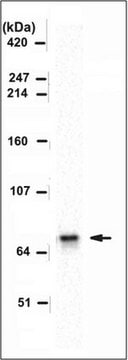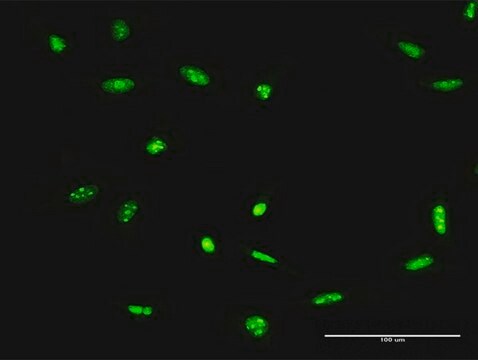MABE1790
Anti-ADAR1 Antibody, clone RD4B11
clone RD4B11, from rat
Synonyme(s) :
Double-stranded RNA-specific adenosine deaminase, EC: 3.5.4.37, DRADA, RNA adenosine deaminase 1
About This Item
Produits recommandés
Source biologique
rat
Forme d'anticorps
purified immunoglobulin
Type de produit anticorps
primary antibodies
Clone
RD4B11, monoclonal
Espèces réactives
mouse, human
Conditionnement
antibody small pack of 25 μg
Technique(s)
western blot: suitable
Isotype
IgG2aκ
Numéro d'accès NCBI
Numéro d'accès UniProt
Modification post-traductionnelle de la cible
unmodified
Informations sur le gène
mouse ... Adar(56417)
Catégories apparentées
Description générale
Spécificité
Immunogène
Application
Qualité
Western Blotting Analysis: 4 µg/mL of this antibody detected ADAR1 in Kusa4b10 mouse cell line overexpressing mouse ADAR1 p110.
Description de la cible
Forme physique
Autres remarques
Not finding the right product?
Try our Outil de sélection de produits.
Certificats d'analyse (COA)
Recherchez un Certificats d'analyse (COA) en saisissant le numéro de lot du produit. Les numéros de lot figurent sur l'étiquette du produit après les mots "Lot" ou "Batch".
Déjà en possession de ce produit ?
Retrouvez la documentation relative aux produits que vous avez récemment achetés dans la Bibliothèque de documents.
Notre équipe de scientifiques dispose d'une expérience dans tous les secteurs de la recherche, notamment en sciences de la vie, science des matériaux, synthèse chimique, chromatographie, analyse et dans de nombreux autres domaines..
Contacter notre Service technique








